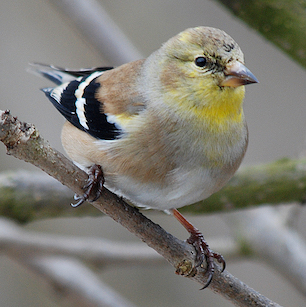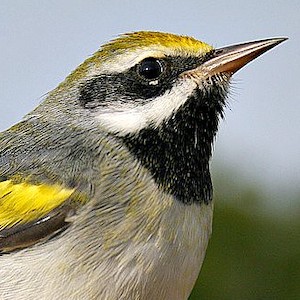
Cerulean Warbler by Dan Mooney/Flickr.
When we use scientific language, we strive to be clear, accurate, and consistent, but with reflection, we sometimes recognize areas where we could improve. For instance, when we say that a population of Cerulean Warblers “over-winters” in Ecuador, is that really accurate or clear? After all, in Ecuador, day length is roughly the same year-round, so there isn’t a “winter” the way we think of it with short days and colder temperatures. In the tropics, people and animals typically organize their lives around wet and dry seasons. Wet seasons are often referred to as “winter” but the timing of this varies widely by region. Another example: does your field guide to North American birds include the Mexican Parrotlet? Probably not, even though these tiny, gregarious, green parrots only occur in Mexico, a country that lies entirely on the North American continent. Many people in the US and Canada–including scientists–use the term “North America” to refer to the US and Canada exclusively, even though the continent of North America extends from the Arctic to Panama.
In a new paper in the journal Ornithological Applications, IBP’s Assistant Director for Demographic Monitoring Programs, Steve Albert, and Executive Director, Rodney Siegel, make the case for improving the language we use when talking about migratory birds. We talked with Steve about the paper and recommend that you give it a read. It describes their suggested improvements and the reasoning behind them concisely and readably.

Steve Albert, IBP's Assistant Director for Demographic Monitoring Programs.
What was the impetus for this paper?
It was several long-percolating ideas that came together recently. For example, regarding the seasons, if you’ve ever traveled in the tropics, you may have noticed that people generally refer to “winter” as the rainy time of year, which may (or, more often, not) correspond with our winter here in the U.S. and Canada. In fact, in most places in the tropics, there are just two seasons: the rainy season and the dry season, and people may not even refer to them as winter and summer. When I would travel to Latin America for work and talk about “wintering” birds, I realized it wasn’t accurate, and possibly even confusing to people who had an entirely different timeframe in mind. Granted, most professional ornithologists knew I was referring to the temperate zone winter, but it seemed disrespectful to refer to their lands and seasons in our terms.
With the use of the term “North America”, I’ve known for a long time that it has been a pet peeve of many in Latin America that people from the U.S. tend to refer to themselves (and only themselves) as North Americans. There’s just a disconnect between the verbal shorthand we use and what’s really accurate.
How common is the frustration with geographic bias in language among Latin American colleagues or US/Canada-based scientists who work in Latin America?

A Mexican Parrotlet, which is endemic to North America. Photo by Mark Watson/Flickr.
I think it’s fairly common. After the article first went online, I got an email from a Central American researcher who liked it. He said he’s always read about spring and fall migration but never understood those terms. There is no such thing as spring and fall where he lives. This is why we suggest using the terms “pre-breeding,” “post-breeding” and “post-natal” to describe different migrations. My co-author, Rodney Siegel, and I want to stress that we’re not in favor of entirely ditching the terms spring and fall. For discussions of species that restrict their lives to the temperate north, or for lay audiences, they’re entirely appropriate. But for scientists and conservation professionals working across borders, it’s important to strive for accuracy and inclusivity.
In addition to the proposed new language being more scientifically accurate, can you describe the benefits to the ornithological community?
First and foremost, as you mentioned, it is more accurate—that’s our main argument. In addition, it’s a nod to our many partners and colleagues in Latin America that we understand the shared responsibility for conserving these migratory species which, incidentally, spend way more time south of the southern U.S. border than north of it. There are hundreds of dedicated conservation professionals working in Latin America to study and protect these shared species, with a very small fraction of the financial resources we have here in the U.S. and Canada. If we can improve communication and understanding of their issues and challenges, even in a small way, it will be a step forward.






